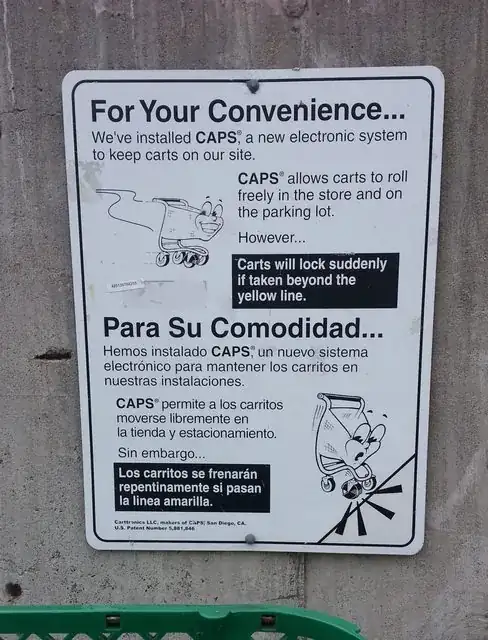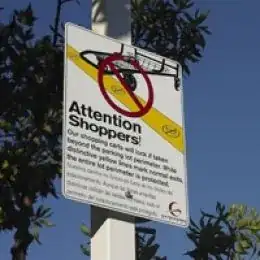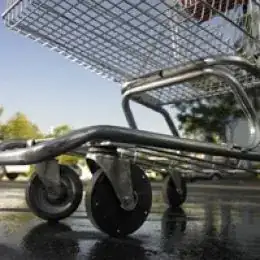On the supermarket trolley, a notice says that the trolley will stop if you try to take it outside the precincts of the shop.
Is it true?
Is so, how does it work?
Example sign from Hyperorg.com

On the supermarket trolley, a notice says that the trolley will stop if you try to take it outside the precincts of the shop.
Is it true?
Is so, how does it work?
Example sign from Hyperorg.com

Yes, there are actually a number of systems that can be used with electronic wheel locking systems apparently being the most common.

While there are a number of different systems that might be used, they all operate on the same basic principle, to quote one of the manufactures:
A: The CartControl shopping cart retention systems are patented electronic systems that comprehensively prevent the removal of shopping carts from store premises. The CartControl shopping cart retention systems combine a digitally-encoded locking signal, embedded perimeter antenna, and our patented self-braking shopping cart wheel. A digital locking signal is transmitted via an embedded cable. The path of the cable establishes a perimeter boundary. An electronically-activated, self-braking wheel installed on each cart is designed to lock when it comes within range of the perimeter boundary signal.

This is done primarily to prevent loss of the shopping carts through theft although it does have the added benefit of saving companies money since they can be fined for the "litter" if the shopping carts leave their property.
Here's the product page from the manufacturer of the CAPS system noted in the sign you posted:
http://www.carttronics.com/CAPS.asp
Carttronics CAPS® is a highly effective cart and trolley loss prevention solution with the lowest lifetime cost of ownership. CAPS is operating on thousands of store sites in dozens of countries around the world, including independents, regional chains and sites owned and operated by 15 of the top 20 global retail chains.
The CAPS system consists of a small gauge antenna wire located in a narrow saw-cut around the site perimeter, a small electronic signal transmitter located in a secure location in the store, and one Carttronics’ locking CAPS caster on each cart. When someone tries to leave the store property the CAPS caster automatically releases a durable yellow braking shell that rotates down to separate the wheel from the ground and stop the cart. The braking shell is readily reset by store personnel using Carttronics’ hand held reset controller, placing the cart back in service.